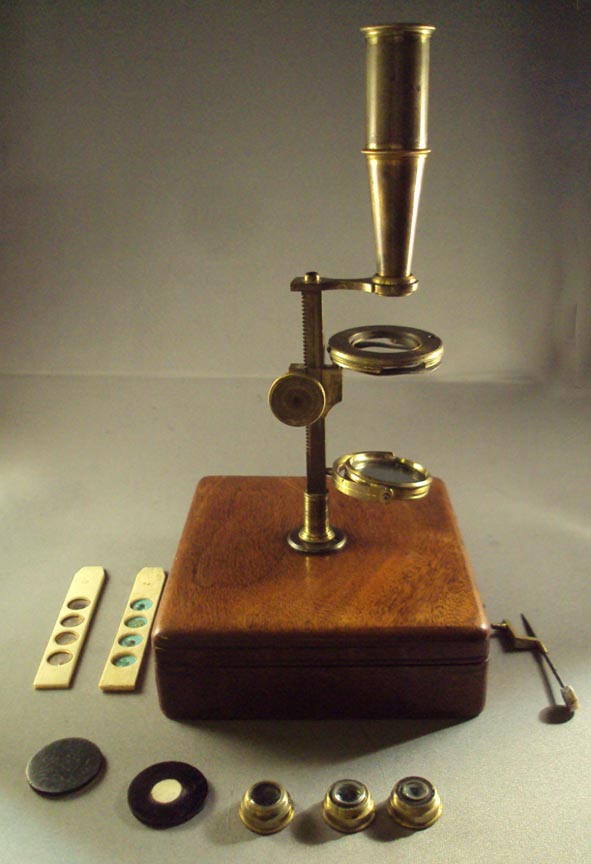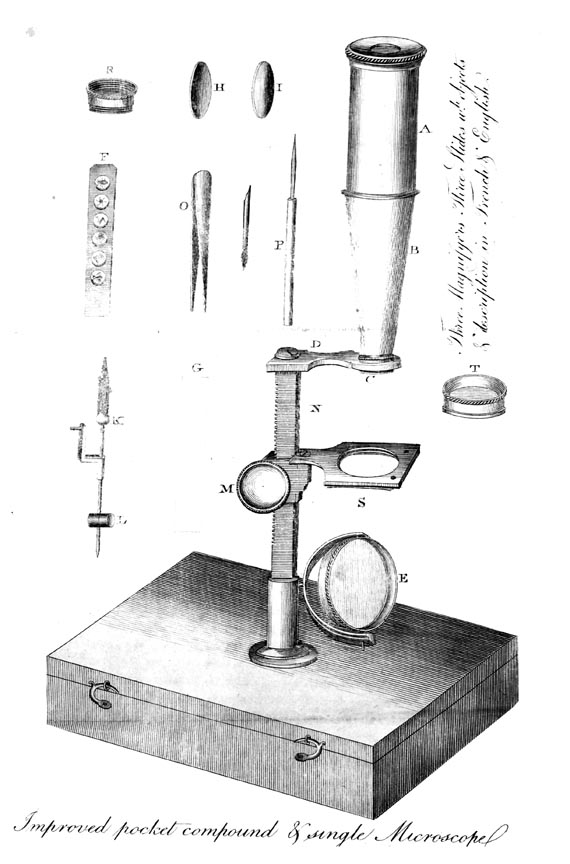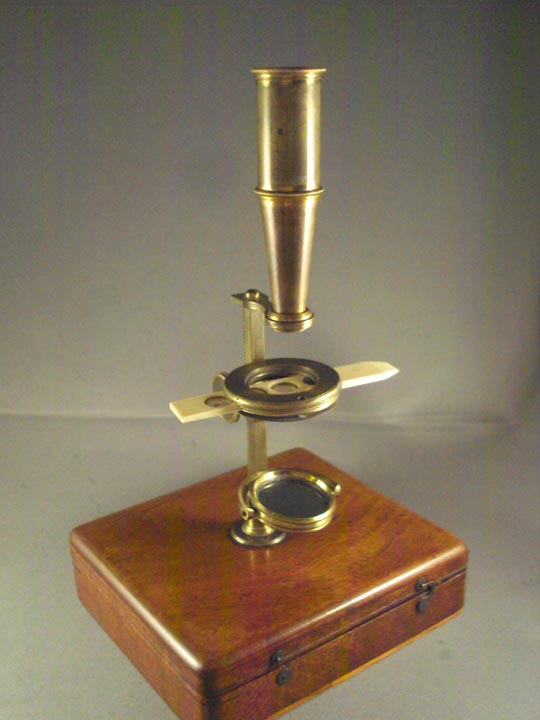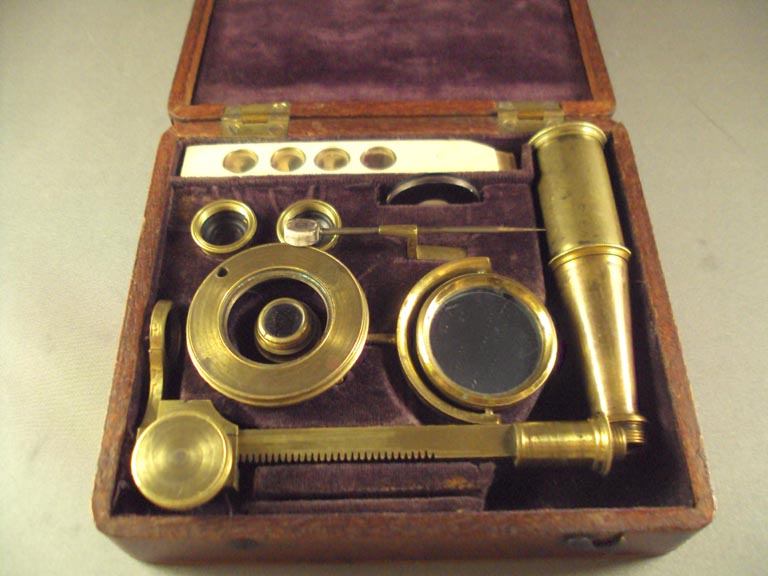MICROSCOPE-ANTIQUES.COM © 2013-15.
BOX-MOUNTED MEDIUM SIZED CARY-GOULD MICROSCOPE
c. 1835
Maker: Unknown
Serial Number:None
MODEL: IMPROVED POCKET COMPOUND AND SINGLE POCKET MICROSCOPE




DESCRIPTION
This is one of the common variations of the Cary-Gould microscope. The original design, referred to
below, was smaller. Three main sizes are recognized and this one is medium
in size.
Accessories still with the instrument include:
- 2 bone sliders (one with opaque and the other with
transparent specimens)
- a stage needle with black and white disc (which may have originally included a stage forceps)
- three objectives, which could be used alone or combined, and with or without the compound tube
- an ivory disc, white on one side and black on the other
- another black and white disc, but this one
with a white center surrounded by black
- a circular stage with a understage sprung slot to accept the sliders
- the substage mirror
Likely lacking from the original kit are forceps, scalpel, livebox, and Camel's hair brush.
The inside of the case is lined in purple velour. Although the mirror is contemporary, it is not original to the
instrument, as it is
slightly larger than the compartment for it in the case. Also of note, the illustration (from a different microscope kit)
shows a square shaped stage rather than the circular one seen with this instrument.
HISTORY OF THE CARY-GOULD MICROSCOPE
As time passed, different versions of the Cary-Gould microscope were produced, and this is but one example.
Preferences for different sizes became apparent and the demand
was apparently large enough that these niches were filled. Similar variations in size
of other microscopes
of the nineteenth century (particularly from France), are apparent.



